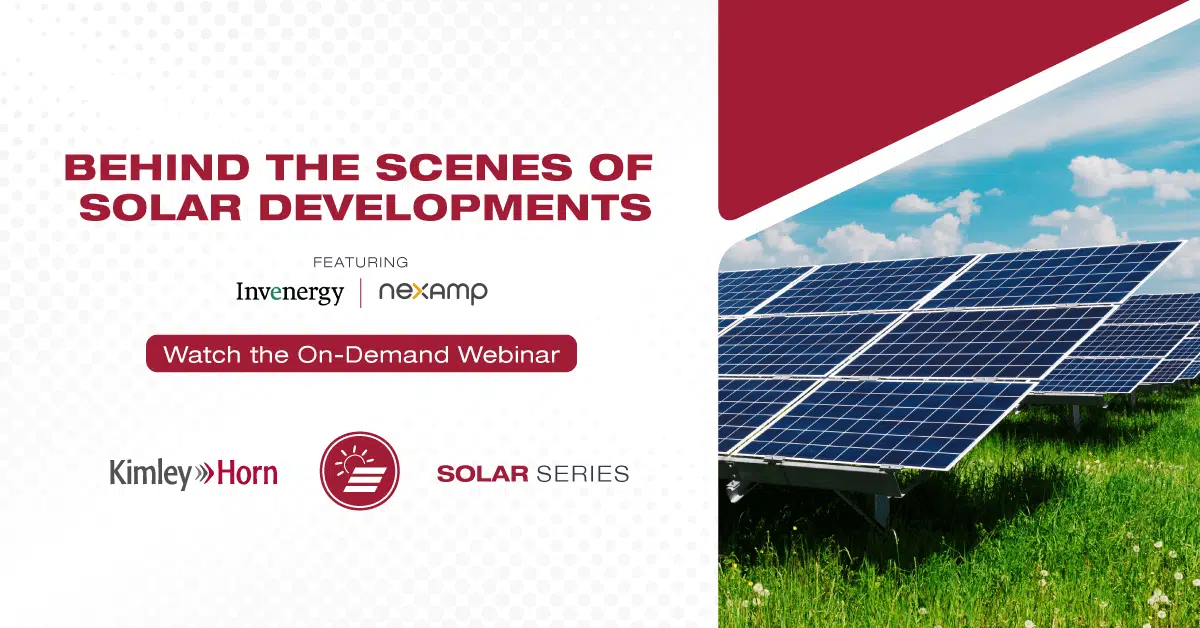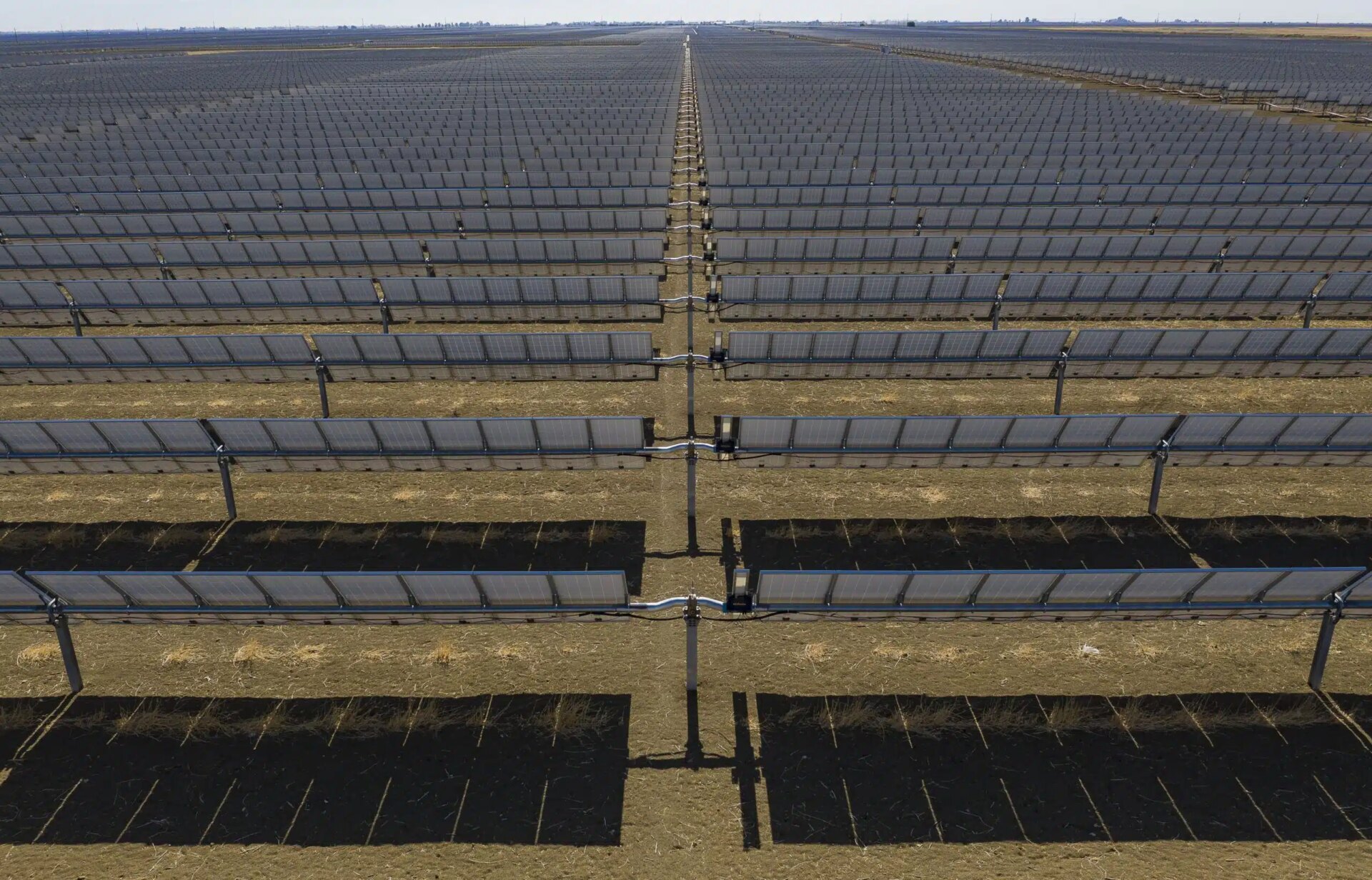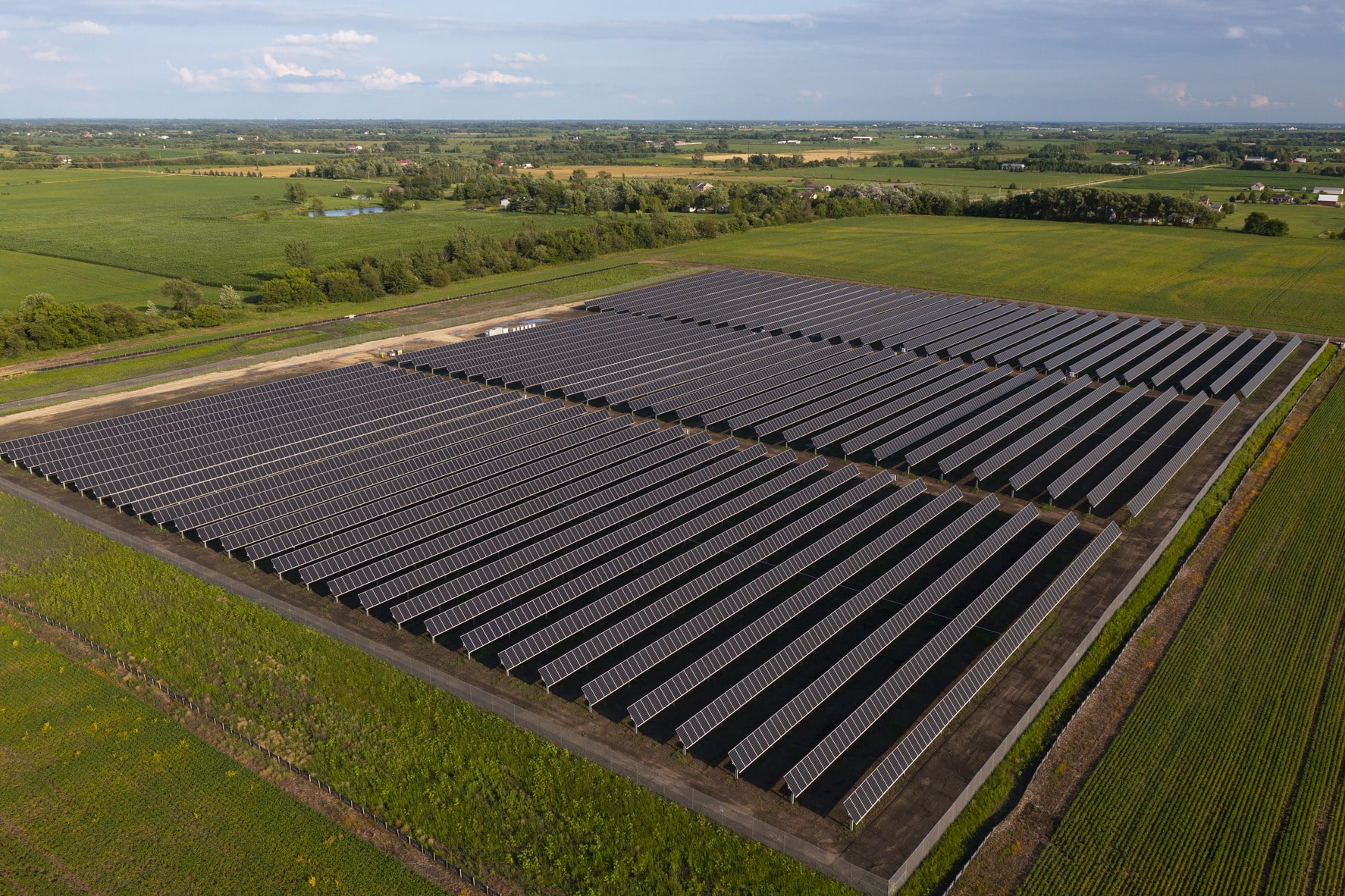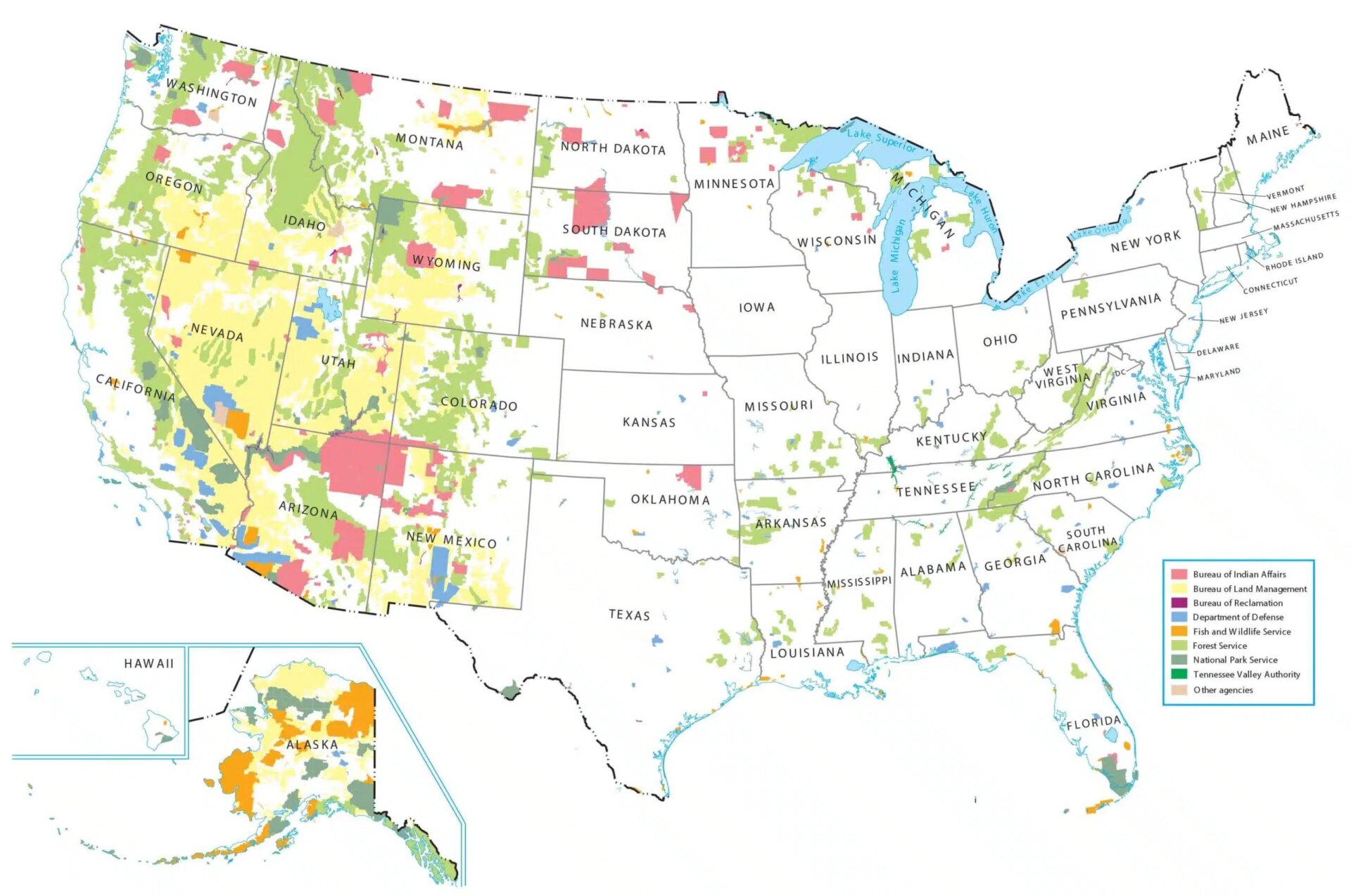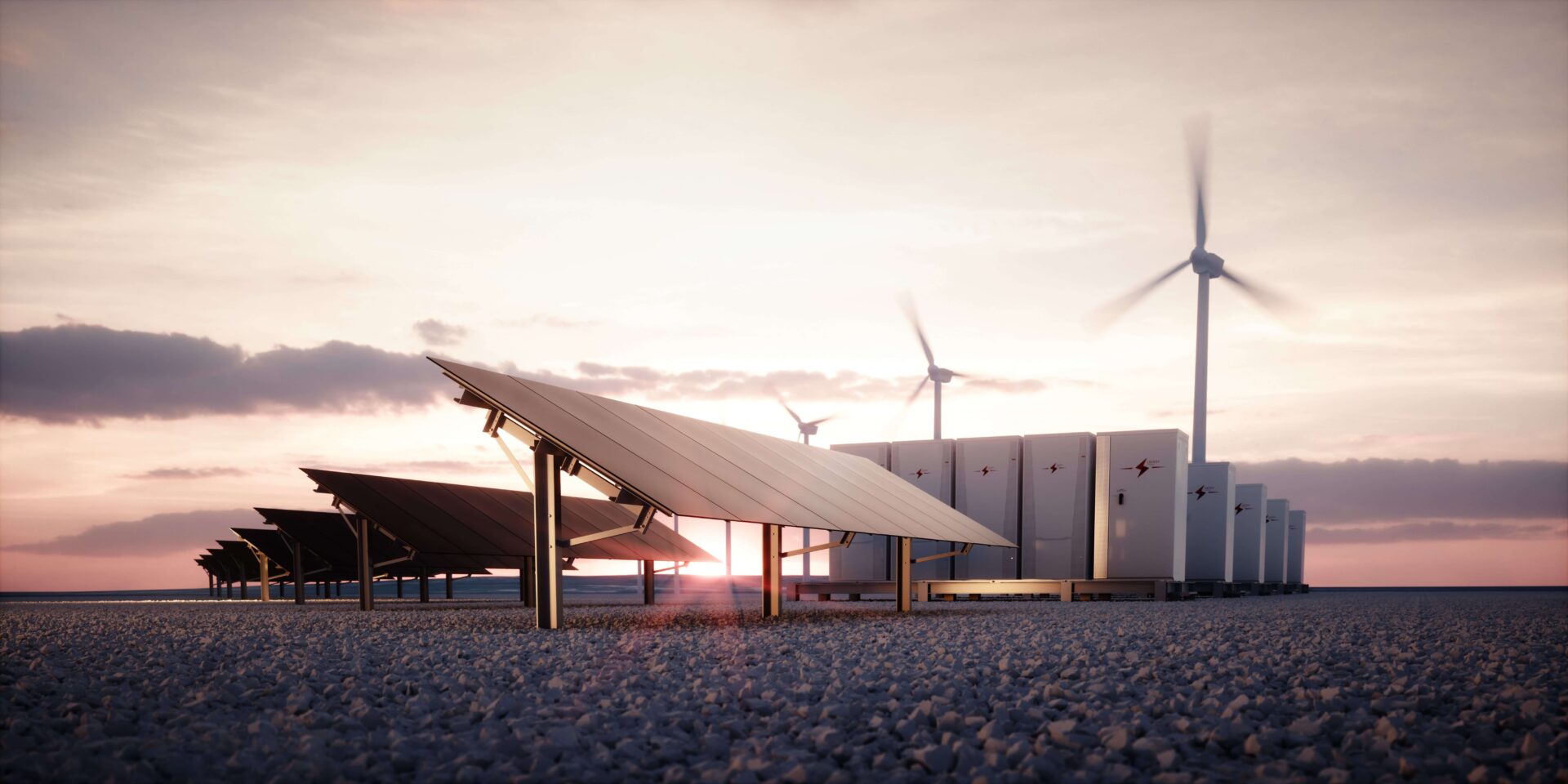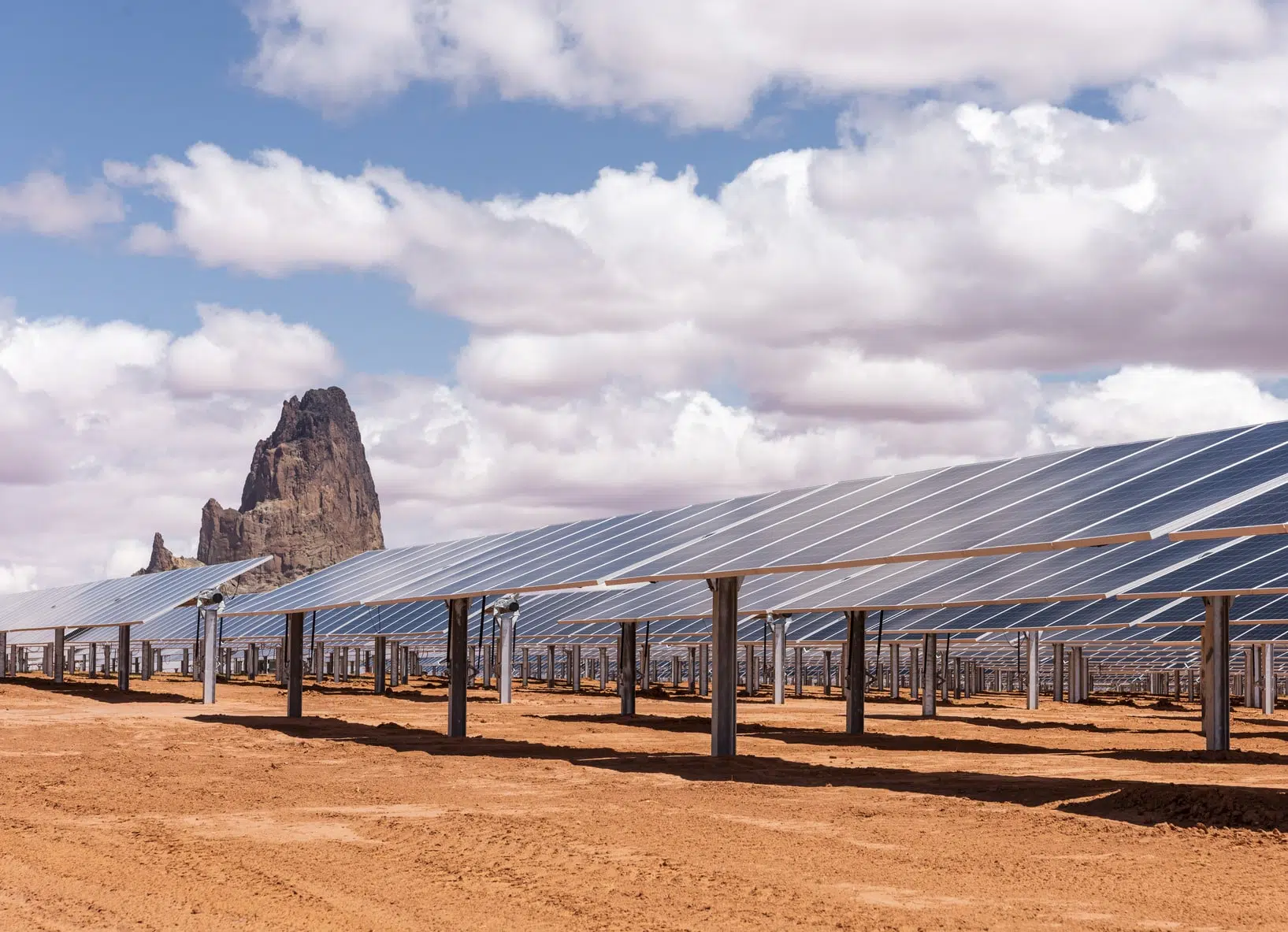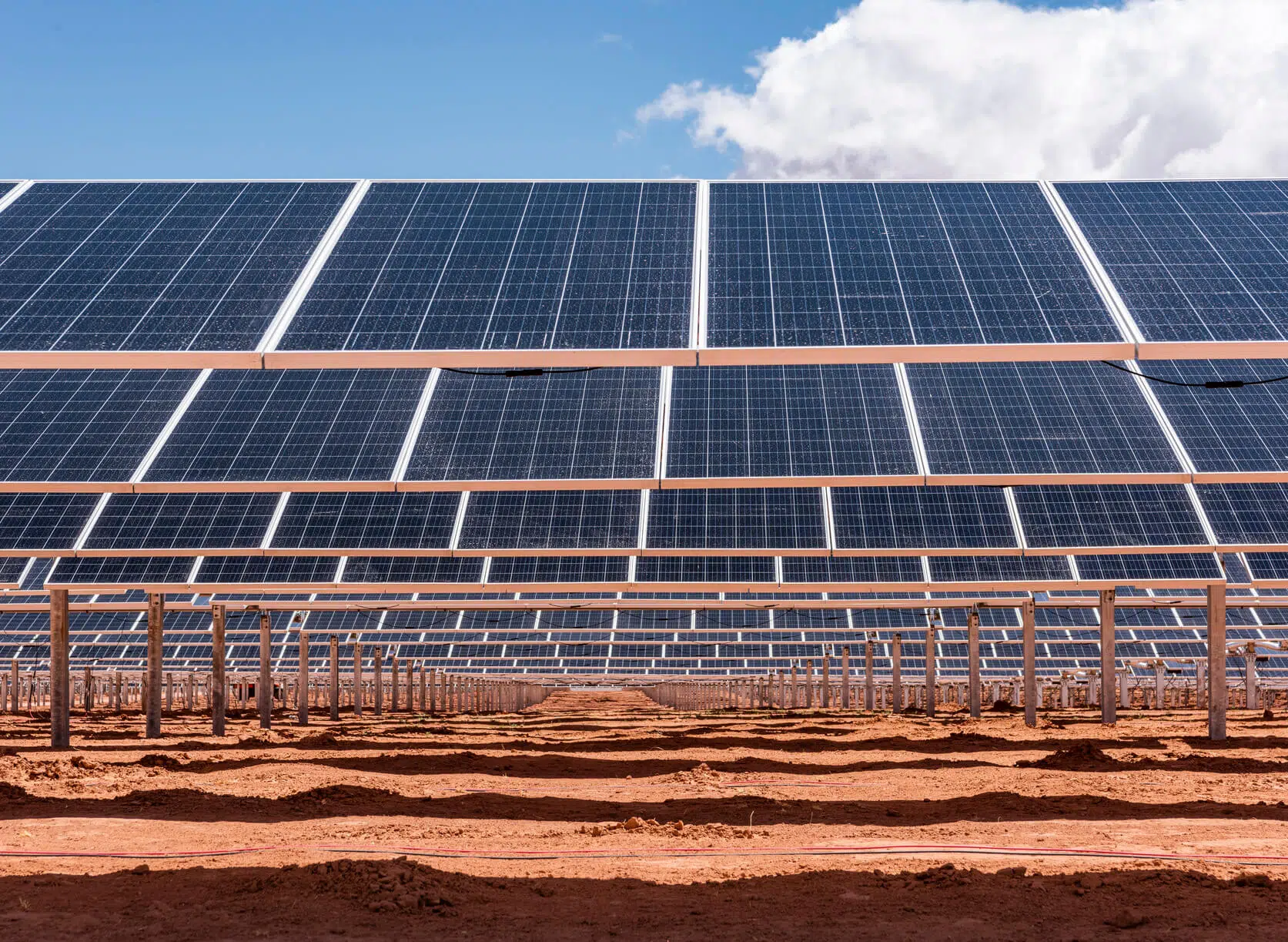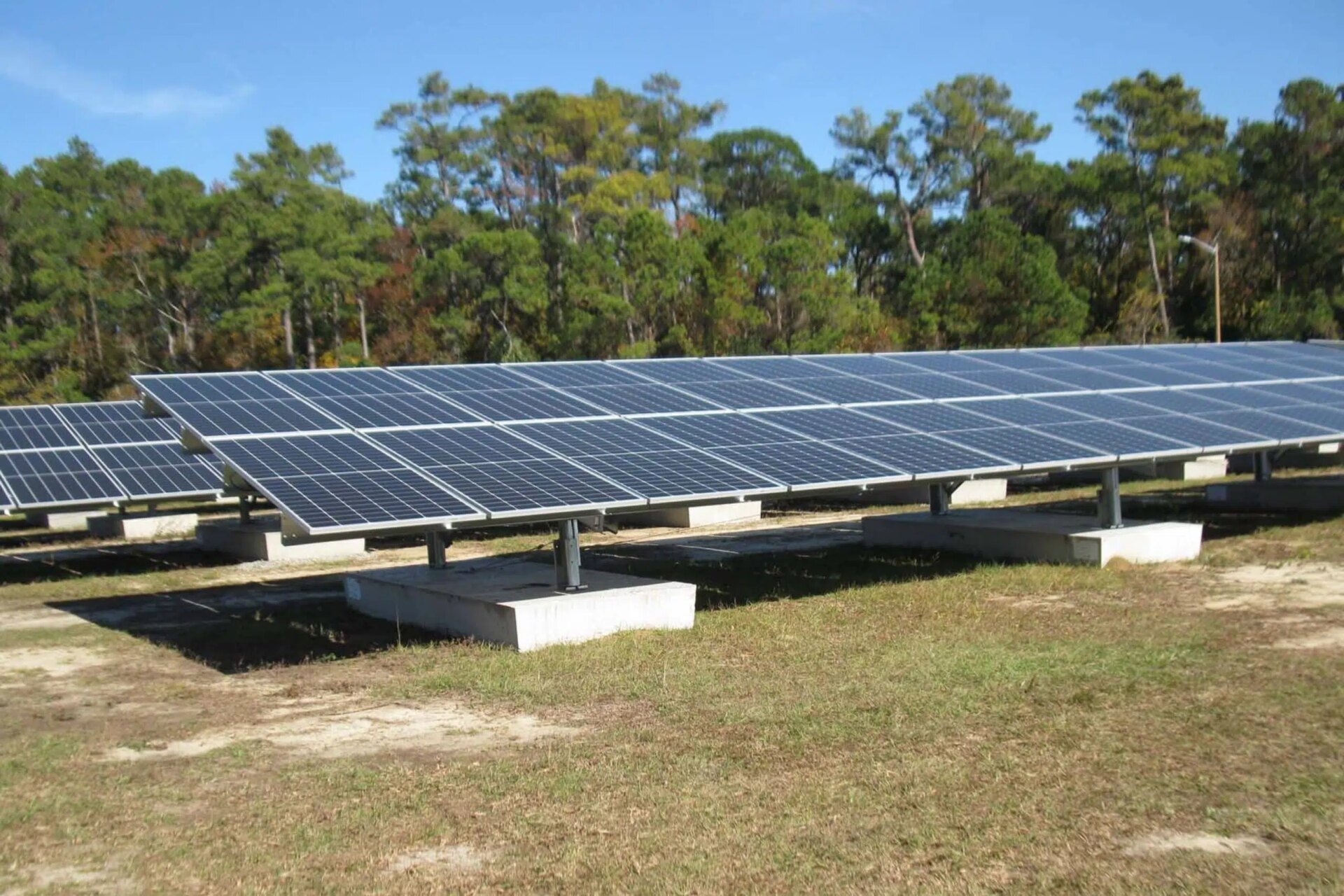Kimley-Horn Solar Series: Behind the Scenes of Solar Developments
Click the image above to watch the on-demand webinar.
About This Webinar
The first webinar in our series on solar energy generation features a panel of solar experts who take a deep dive into the development of solar energy generation facilities from the developer perspective. They cover topics such as educating local communities on an impending solar project, being the first solar project in a market, varying approaches to a project based on the market, and identifying challenges developers face now and in the future. Listen to the on-demand webinar to learn more.
-
Read the Transcript
This transcript was generated by computer recognition software. Although largely accurate, please excuse any unanticipated grammatical, syntax, homophone, and other interpretive errors that may have been inadvertently transcribed.
Jason Cooper:
Good afternoon, everybody, or morning, depending on where you’re joining us from. My name is Jason Cooper. I’m a civil engineering consultant with Kimley-Horn and I’m going to be moderating today’s webinar. This is part one of a four-part series that Kimley-Horn is going to be hosting regarding solar series webinars. This one is behind the scenes of solar developments where we’ll be focusing on just that—the development cycle of the solar process. I’m going to start with just a couple of housekeeping items for the folks that are in attendance. You will not have access to mute or unmute your lines. You will not have access to turn on or off your video, but you will have access to the question and answers function of the zoom meeting.We’re going to try to save some time at the end for Q&A, so as questions arise throughout the conversation that we’re having, feel free to drop any you have into the question and answers tool. One of my colleagues will be filtering through those and sending those my way. If we’ve got time at the end, we can answer some of those questions. If we do run long, we’re going to be respectful of everybody’s time. We’ll be wrapping this up right at two o’clock central standard time. If we aren’t able to get to any questions and answers, we’ll be providing all of the panelists and my own contact information when we send out a copy of the recording. That way, if you do have any follow-up questions or you want to reach out to any of us, we’re more than happy to chat. Without further ado, I will kick it to our panelists to do some introductions here and I’m going to weave the first question of the webinar into this introduction.
Michael, we will start with you.
First question is, why go solar personally, how did you get involved with the solar industry? And then tell us a little bit about Invenergy and your guys’ background.
Michael Kaplan:
Thanks for the introduction. Jason and Kimley-Horn put together this presentation for those that are able to join us here today. Jason mentioned my name is Michael Kaplan. I’m the Vice President of renewable development for Invenergy. In undergrad, I studied political science and sociology, subsequently got my MBA, and started working for a land development firm, primarily residential and commercial development before getting synced up with Invenergy and starting my career here in 2010. I found there was quite a bit of similarities between the land development work for residential and commercial properties and what is required for generation facilities. Why go solar, from an Invenergy perspective? We’re an owner operator of natural gas, battery, wind, and solar facilities and we’re operating across the country and around the world.For us, and we’re an independent power producer, so we’re trying to serve the needs of various utility or commercial and industrial buyers’ power. Penetration into the solar market has been a natural evolution for our company. There’s a lot of the same competencies that are required for some of those other forms of generation. Most notably there’s been an increase in demand from our customers for solar energy, particularly the drop in costs and the coincidental time of date pricing that solar generation provides relative to some other forms of generation. From our perspective, solar is just one component of a mixed generation of a generation mix that has got a cost and benefits. That’s how and why Invenergy got itself involved.
Jason:
Thanks, Michael, appreciate that. Ethan, same question to you. Quick intro on yourself, and then how did you personally get involved with solar and what’s Nexamp’s history and background?Ethan Gyles:
My name is Ethan Giles. I’m director of channel development at Nexamp. Channel development is our team that focuses on project acquisitions from other development partners around the country that we then integrate into Nexamp for construction and long-term operations and maintenance. My own background: studied environmental science in my undergrad years, and then civil environmental engineering in grad school, worked for eight or so years as an environmental consultant project manager engineer focusing on a variety of different environmental type projects, mostly in the realm of contaminated site remediation working with clients to clean up their legacy messes, essentially industrial manufacturing chemical sites. Through that work, I got familiar a little bit with the growing world of solar, five, six years ago, worked with a couple of solar clients at that time and decided that would be an exciting thing to get into. I started looking for opportunities in renewable energy generally and saw that at the time Nexamp was a much smaller company four years ago who was looking for a project developer that also had some engineering background. It looked like a good way to get my foot in the door. Took that opportunity and have been with Nexamp for the past four years.Nexamp started out about 12 years ago as a company that was focused on helping other people go renewable, whether it was solar, small-scale wind, some thermal stuff, mostly residential, small commercial, focused exclusively on solar in subsequent years, and since then has really been on a growth trajectory in the community solar space, specifically.
We’ve worked now starting out in Massachusetts and Rhode Island, then broadening into the wider Northeast and have now been working in a community solar-friendly States as those policies are enacted around the country, including Illinois, New York, and Maryland. We keep tabs on those states and try to get into those markets. We’ve been doing a little exploring lately of stand-alone storage and utility scale storage, but our real bread and butter and our competitive advantage is in the community scale solar space. I’m happy to get more into that as we go forward in the conversation.
Jason:
Thanks Ethan. Last but not least, John if you want to go through a quick intro and then as a consulting engineer that supports solar developers like Nexamp and Invenergy both on the community DG side and the utility side, if you don’t mind giving a brief history to Kimley-Horn and our role in that process, I think it would be good.John Barefoot:
I’m John Barefoot from Kimley-Horn. I’m a licensed professional engineer here in North Carolina and work in Raleigh. I’m a NC State engineering grad, got about 11 years of experience in the land development arena. I joined Kimley-Horn in 2015 and work on a wide variety of projects: commercial, industrial, and retail, but solar related work has really been a passion of mine since joining KH. I’ve been doing an ever-increasing amount of that. Since joining, it’s probably 80 to 90% of my focus right now, and I serve as a regional leader here in the Southeast for our solar team. I help developers like these two and APCs as well on many solar sites across the Southeast, and really sprinkled throughout the country. I love it when all projects run smoothly, but I do enjoy the strategy and the challenges that come from solar development and what it can throw at you.I think about how we can hone our role in this space. We started dabbling in solar probably around a decade ago. A couple scrappy Practice Builders won some jobs and wanted to learn more and more. It was really a side hustle, but as these projects continue to do better and solar related design work just grew, we made more connections and we started out on the EPC side, but quickly made relationships with developers and began to add value there. In general, we’re a multidisciplinary engineering firm. We do Aviation, Transit, all kinds of asset classes. We have more than 4,300 employees in about 95 offices across the country. In the solar space, we are ranked number two in solar design by ENR in 2019. We’re always innovating and just trying to understand how to generate better information earlier to help with de-risking.
We have a one-stop shop approach and try to figure out a way to offer every service that’s needed from A to Z on these projects. I think my job as a consulting engineer on these at the core we’re providing hydrology, environmental, civil design and landscape and expert witness testimony, anything you need, and a wide variety of technical stuff to navigate entitlements. But I think we go far beyond that. Here we really see ourselves as a part of the development team and in order to do that, I think we try to understand all the dynamics of the developer and their methodology, how they do risk schedule milestones, what are the underlying goals behind why they’re asking us to do what they need? Consolidating that info lets us look around the corner and we like to identify challenges before they ever arise.
We’ve gained a deep bench of knowledge that we can bring to the table and that helps us with strategy. We love sharing knowledge with developers as well. We do a lot of brown bags for their development teams, engineering staff, and we also have that foresight into the EPC world. That helps us understand what entitlement commitments might mean when they really hit the ground later. It’s all about thinking about the bigger picture and thinking outside the box and sometimes having difficult conversations when the logic is on our side, and sometimes we’re navigating process that aren’t really geared with solar in mind.
Jason:
I echo that the collaboration is one of the coolest parts of the solar industry. There are so many great people you get to work with and the developers and the ETCs and new markets. We’ll go through some of that here today.Thank you all for those intros and your personal backgrounds and company backgrounds. With that, I’ll kick off the first question here, Ethan, I’m going to direct this to you, and it’s a three-part question. Feel free to tackle it as you see fit.
When you guys are educating local communities, how do you navigate those areas that have little to no solar understanding and how do you build trust with the local public and then public officials, and then how do you approach those markets differently that are already familiar with solar, or may not be familiar with solar?
Ethan:
Nexamp generally tries to build that trust through transparency, as much as we can. We have in-house developers as well as acquiring from other developers. Our developers might be the first ones on the ground to a municipality or county. Even if it’s a first experience for that particular jurisdiction or they’re pretty used to solar projects, the approach is similar. Our developers in the field are experts in understanding the programs and regulations that are governing the projects that are being proposed and also are endeavoring to understand the motivations and the sensitivities of community leaders and community residents in that area.If we’re not receptive to those concerns or coming across as eager to share and educate about what we want to do, we’re not doing our job. We believe that each project and we want to express and share why each project is going to be a community. That foundation of trust is what we’re trying to build through that. Conversations are really the heart of it all, so we try to engage in those informational conversations with community officials and whether it be a neighborhood or a session before a permit hearing, things like that are all good ways to sort of grow that trust and build that education level. That informational meeting style is especially important in those communities you mentioned were totally new to solar.
We were seeing a lot of that in, for example, New York three or four years ago, Illinois two years ago, and last year in Maine. Those are states where community solar policies were enacted, and you saw rapid growth in companies like Nexamp in those markets putting proposals out there. You may also see that in those new markets, as we call them, that jurisdictions might be crafting their very first solar ordinance or zoning regulation. Getting involved early in a way that’s collaborative puts the best face of the industry forward. You can have some reasonable influence in that process that lands on ordinance or regulation that makes sense for everyone rather than one that’s overly restrictive or so loose that they’re going to end up with problems.
We’ve tried to do that. The message that we want to try to drive home is that our community solar product can benefit residents and businesses and the community. We speak to how we have a community solar subscription offering, where our residents and businesses can become subscribers or off-takers of the energy we’re producing in the project that’s going to sit in their town or county. That’s compelling. I can get into a little bit more on that later, but that’s the way we approach any market, particularly newer markets.
Jason:
That’s great, and I think this is going to be a good one for Michael to chime in on too. I know you mentioned, Ethan, that you guys tend to follow the legislation and the community scale programs. There’s a group of folks going in and it’s a much smaller footprint, and those conversations with local municipalities and public are maybe a little bit different, whereas Michael, Invenergy’s scale of utility scale developments is much larger.I’m curious as to your insight on navigating communities when you guys have such a larger footprint and I imagine similar but different conversations.
Michael:
I appreciate that and I agree there’s probably a lot more similar than there is difference but you’re right. The sheer scale has the potential to sound a lot scarier to folks. First and foremost, I think what we and our teams try and convey to stakeholders is that we’re not going to be able to have one conversation or even two conversations, or even three conversations and help you understand the universe of everything that it’s going to take to bring a project forward and to help manage helpful information from misinformation and making sure that folks are getting the accurate picture of what the project is contemplated to be versus what it is not contemplated to be. Many folks conflate technologies and don’t realize that solar or thermal are different than solar photovoltaic versus concentrated solar. These are all different things, but reasonable things for folks to not be familiar with. It never ceases to amaze me how little the average person in America understands the energy industry or what it takes for the lights to turn on and off.Part of our trust building is more about us trying to be as transparent as possible, trying to be clear about what we don’t know about the site. Oftentimes when we’re starting those conversations, there are a lot more unknowns than there are knowns. All we know is that there are some fundamentals at this particular site that are interesting to us, and of course we need to find landowners that are interested in participating. We need to make sure that there is a regulatory regime that we can actually permit our projects but one of the long leads in the long poles in the tent is our interconnection study process. That plays out over the course of, in many cases, years. It’s a little bit of a balance between getting folks either to cited that a project is coming before we have a lot of confidence that a project is even going to be possible or viable.
Again, having that open line of communication and be willing to talk to folks about the industry as a whole and what the project is for. There are a lot of different, very well-intentioned questions that have complicated answers like “why don’t you just build this in a desert.” There are a lot of transmission related questions and market structure related questions, like is your project going to produce EMF? Again, another thing that is not going to be an easy one or two sentence answer. We need to talk about how every piece of electronics and the computers that you’re working on right now are producing EMF. The real question is the order of magnitude, right?
It’s key to have that open line of communication. To piggyback off of one of Ethan’s comments, a lot of times, local jurisdictions might put forth what they believe to be a sound ordinance or policy for land use with respect to solar. They may think that what they’re doing is putting something together that will help enable a project to come in, but what they might not realize is that actually some of the conditions or some of the concepts that they’ve put together will actually prevent not create and not enable us to do so. Being able to then have that open dialogue like “we think what you were trying to get at was this concern and we think we could get there by doing this instead of that.” Then trying to work with them and show them, look, these are some other communities that we work with, and this is how they handled that same issue. You don’t have to take my word for it, but we can put you in contact with some of those folks. When you’re going into a market that maybe doesn’t have familiarity with solar, that is an opportunity to help us facilitate a conversation where maybe folks aren’t already coming into it with from positions that are either accurate or inaccurate.
Jason:
Along those lines, we got a question that aligns right with that.When you are educating those communities, what are some tools that you’ve used or witnessed to help the communities understand energy and solar and its benefits? What are some tools that you guys have used or seen used that have been successful?
Michael:
Yeah, I think maybe the number one item would be economic impact studies that we’ll put together for through third parties that help identify multiple different economic and creative streams, one of which would be the direct folks to whom we’re paying for the construction of the facility. The other of which would be the direct payments we’re making that landowners for hosting the facilities. The other would be the taxes from sales taxes and property taxes that the projects are spinning off over time. Then there are operations and maintenance folks that are going to make that community their own home and have their families going to school there. We will often put together reports to illustrate the direct job impacts, the indirect, and then what’s referred to as induced job creation that any one of these projects can create.Jason:
That’s great and you mentioned something, I just had to carry a question on.At town hall meetings and neighborhood meetings and things like that, what is your guys’ typical approach? Is that in every project requirement, do you tend to do it by market? How have you guys pivoted with the virtual environment? Have you been hosting any virtual town halls or seen any success in that?
Ethan:
Yeah, we’ll try to get proactive with the community. If we see a project that looks like it’s particularly in an area with a lot of residential butters, for example you need a site-specific decision-making process. There are times when it’s an established process. We’ll talk to folks that are going to get a notice in the mail if they’re within a certain distance of the proposal. We’ll see them there, but sometimes we’ll proactively get out there and try to have those conversations. Sometimes those conversations are challenging, and you wish you didn’t get out there and be proactive.I think the goal of them is that people are going to show up if they’re concerned about a project with questions. If they’re showing up for the very first time in that public hearing, you’re going to spend a lot of time answering questions that you might’ve been able to get that information out there in a less formal way and a more conversational way, which is the way we prefer to do it in that more proactive setting.
Jason:
Awesome. One other question came up here, and I think this will be the last one, and then we’ll go to our tour.We see this pop up a lot, but how do you answer questions about the aesthetic concerns from people who bought farmland and like looking over the agricultural fields and things like that? What tools and resources have you guys used to either alleviate the aesthetics question or be able to provide some sort of means for those folks that get them to be in support of the project, or at least navigate through that process during the public hearing?
Michael:
Number one, to the extent there aren’t counting requirements or stave requirements for there to be vegetative buffers and screens around projects either to obstruct or conceal from residences or public rights of way, we are more than happy to incorporate the same through our stakeholder engagement our stakeholder engagement process. What we try and do is express that beauty is in the eye of the beholder. Some folks don’t seem to mind whether there’s crops in the field that are using sunlight to convert through photosynthesis and creating crops out in the field as compared to electrons. Other folks take exception to that. In either case, we work with firms like Kimley-Horn, where what we can do is try and come up with a vegetative screen mix that will do a good job of both surviving in the particular climate that we’re looking at and providing a sufficient screening to again obscure at worst and conceal at best the perceived adverse impact.Jason:
I can speak to experience in that. The goal of the solar industry is to be a low impact development and be a neighbor that’s not noticed. Those screening and those visual renderings and working with the local communities and residents is a critical part to our development, right? There are the people that do have to live next to these solar farms, and like you said, there are a lot of different interpretations of that. Being able to work with those local residences to come to an agreeable outcome is something that is part of the navigating through the process.Jason:
In the interest of time, I think we’ll move on from this one to our next question. This one has to do with the mentality on de-risking. We know that part of the developer’s processing cycle is getting the land under control and then starting your de-risking process and figuring out if it’s viable. and that can take a variety of shapes and forms depending on the developer and the company’s process. Ethan, I’ll start this with you:When Nexamp starts de-risking projects and are going through your environmental, do you have a list of must haves and are these project-specific? Could you navigate us through your guys’ process?
Ethan:
To jump back to the last question very briefly, I think the aesthetic question is one that comes up often, particularly in more developed parts of the country. It’s one where, nine times out of 10, we can reach a solution that includes some screening for a project, whether it’s existing vegetation or planting that are workable for everyone, including the project economics. But sometimes we do get those cases where the municipality or the county is particularly a concern and is wanting the project to be completely invisible and achieving the economics of the project can’t bear it. We do run into that from time to time and I think as a society and a country, as we’re trying to expand renewables we all need to think a little bit about checking our NIMBY-ism a little and thinking we may have to see a solar panel. We may have to see a wind turbine. It might be near our house because we have a climate crisis going on. Like I said, nine times out of 10, that’s not the conversation, but we can do some screening and try to shield this thing.As far as de-risking, it’s a great question. On any project we have sort of our must haves: you’ve got your site control, your permits, your design, and production numbers. You need your interconnection certainty and you need your revenue and incentive certainty, and you’re plugging that all into a pricing or economic model for the project to see if it pencils.
You want to have as much certainty on those items as you can. The form of that is different in different markets, the permitting regimes are different, the interconnection agreements are structured a little differently, but those are universal items across all of our different states that we operate in. Another one that is typical for developers to need certainty on is your off-takers or your subscribers are lined up, or you have line of sight on them being lined up to actually take the energy you’re producing. At Nexamp, as developers, whatever we’re acquiring or developing ourselves, we have really high confidence in our energy sales and community solar team to get that off-take and subscription done for us so that’s never really in doubt for us. Thankfully it’s the other pieces and consultants who are on the ground in a given market like Kimley-Horn that we can tap for that depth of expertise on permitting and design matters are really invaluable as part of that.
One of the things that does vary quite a bit from project to project actually ends up being one of the drier things. If you’re an engineer or developer, you don’t expect it, but that’s title work. We see a lot of projects where we’re going to require an ALTA survey and a title commitment before we get a project financed and if we’re acquiring it or doing it ourselves we need to have those in hand, we need to work with a real estate counsel to resolve title exceptions. If we’re acquiring, we’re working with the seller to get that done, and those title issues can be straightforward. It can take a matter of days to get them hammered out, or, depending on the property and what its history is like, you can have issues in there like historic easements or encroachments that are not geographically well-defined. The land can be burdened with some debt or lien that is ancient, that you need to go running down. It can take weeks or months to get that figured out. That’s one thing we’re trying to get after earlier and earlier in the process is to get that title cleaned up as early as we can. That can be an X factor for sure.
Jason:
On a lot of the environmental studies, I know that we’ve helped with along those lines, but what about phase one, ESA, wetland, delineation, cultural resource trends, and dangerous species? How do you guys approach that as a developer on your projects?
Michael:
Great question. The short story is we can’t even go out and start performing field studies on projects until we have signed up to the real property agreements. For the most part, we’re quite limited when we start signing up. We know we’ve got some satellite imagery and some publicly available information then we hire some folks like yourself to go out and do those wetland delineations, where we might get topography collect topography data for the site. As well as a preliminary geo-technical analysis, the combination of those are probably going to turn what looked like a much larger piece of land that you would think, “oh my goodness, there are 2,000 acres here that could be built.” When you start layering in just the items before we even started talking about setbacks and so on a much, much smaller foot to have a likely to be buildable area.One thing that we do that goes back to the misinformation and the importance of keeping a close line of communication with folks that look on a times, is there might all of a sudden be this perception that, “I’ve heard that they’ve signed up X thousand acres of land. Now they’re going to build a project that occupies that, right?” Which is a very different number than the seven acres per megawatt or so that might be actual once we’ve completed all of our diligence. What we try and do is cast a wide net to make sure that the dollars that we’re spending, the effort that we’re taking, the excitement we’re creating in that community, maybe our project is going to have to be a little bit smaller than we expected. Maybe it turns out to be a little bit more expensive than we expected, but it’s still going to remain a viable project after we’ve done some of those fields. We identified as you suggested the phase one ESA, are there any wrecks recognized environmental contaminants on the site that if we can identify early, it is so much easier and cheaper for us to avoid those things on the front end and potentially then now all of a sudden we’re potentially avoiding a different issue where maybe that gentlemen that Ethan was saying wanted the plant to be invisible. Maybe it’s going to be invisible because of the result of some of our field studies that determine that portion of the property isn’t even going to be buildable.
That’s a little bit of our perspective that we try and cast a wide net and then just keep combing through the detail to come up with the optimal site to be built that can be permitted as well.
John:
I can build on some of that. Jason, I think all those important things you talked about, like the constraints that get layered on, just having a consultant that really has a pulse on the local nuances and what’s required at multiple local levels state levels is important.Talking about de-risking, one thing we’re doing that I think is great is we really try to granulate effort just because we get an RFP or a scope of work and it’s asking for something. We do try to ask the right questions. If that’s on hydrology, maybe you don’t need the Cadillac yet; let’s granulate the effort from desktop to a first model run, and then we can do the bells and whistles later. Same thing for grading, Jason, I know we’re doing a lot of innovative stuff in this space, but we’re able to do some high-level earthwork estimates, and we can always go detailed. We know the layouts are done a change when the EPC comes on board likely, and there’s this process that we need to go through. Same for environmental and other techniques we’re using to ease into it. Match the effort and the spin with the risk that’s at hand and just try to check the box on what you need and really the most effective way.
Jason:
Tell me if I’m hearing that all correctly: Michael, you guys do go through with all of those, it’s just a matter of timing through the development cycle. By the time that you guys are in full design, you’ve already tackled all of those environmental items. Is that safe to say?Michael:
Yeah, that is safe to say. To put a finer point on it, John mentioned that their only question becomes the degree of precision that we might be advancing at a particular time. Again, a preliminary geo-tech is a different scope than preliminary plus pile load testing versus final geo-tech. We’re trying to just lock step, move forward, and make sure we’re first flushing app fatal flaws. From that point forward, now we’re talking about optimization and tweaking what actually would be the least impactful and most economic project.Jason:
We’re going to pivot a little bit here on the context with this question. This is more specific to Invenergy and Nexamp as companies and teams. We’ll start with you, Ethan.What makes you guys unique in the market? We know there’s just a ton of demand for solar right now, and a lot of different developers and a lot of different companies and a lot of different approaches. What is Nexamp’s niche in the market and what is your guys’ separator?
Ethan:
Nexamp is a great place to deploy solar and work with other developers because we’re vertically integrated between development construction EPC services, or in-house our O&M team energy monitoring center, all in house. Our energy sales and community solar subscription teams are our in-house as well. We bring some experience to bear there and some internal efficiencies where a lot of companies are structured to different pieces of that life cycle of a project are either subbed out entirely, or they’re actually selling the project off to an EDC a builder operator or building it and then selling it to an operator for long-term ownership. Our business model is to do A to Z.It’s an advantage to be able to go into a community and say, we want to be your community partner here for 20, 30 years, the life cycle of the project or longer. That is nice to be able to say. As a practical matter, when we have an acquisition that we’re doing due diligence on, working with a seller partner, we’re able to go get answers pretty quickly internally. We think that we’re able to have some efficiencies. We’re able to get groups of professionals together who are, whether it be a design, a solar design engineer, civil engineers, like our colleagues or consultants at Kimley-Horn with construction directors from Nexamp O&M managers from Nexamp, and really roll up our sleeves and get after what a workable solution might be. We end up at a fairly accurate estimating model that way. We’re not relying as much on outside rotations or bids as some other organizational structures might be. Really, it’s just a nice I think place for professionals to be, in that you get to see the full spectrum within the company. Everyone in different parts of the company helps each other raise our collective IQ on how a solar project works from soup to nuts. I’d say that that’s an advantage for us for a variety of different reasons and personally just a good place to put the environmental work in.
Michael:
Invenergy is also vertically integrated in a number of ways except for the EPC component. We do quite a bit of our own procurement of major equipment, but I do rely on third party contractors for the majority of the ENC in the PC. For greenfield projects, we’ll take them through development. We will engineer them to a certain a certain point and then we will arrange financing for those projects. We’ll use our own equity cash equity and tax equity where appropriate we’ll solicit third party financing partners where it makes sense for us to do that, then we’ve got an operations and maintenance team that are all in-house, they’re all employees of Invenergy.In fact, we’ve started to now operate many other third-party operations and maintenance division of our organization. That life cycle leads to us learning some lessons with every project. We’ll have our meetings and talk through what we learned from that last transaction or that last project that we’re going to be able to apply to the next. That feedback loop has definitely been helpful. We’re a private organization and our senior leadership team has been effectively together for almost 30 years, predating their time at Invenergy. These are some folks that have seen a lot of booms in the energy industry and have been able to manage those flat times and are able to be quite nimble changing based on market conditions and demands.
What makes Invenergy special is that we don’t have a preconceived notion of what the project must be or what the contract structure must be. We can accommodate those of our stakeholders, whether they be landowners on the PPA front, or offtake front, or build transfer front when we’re building projects for utility customers and then turnkey to them. We’re agnostic on contract around structure. As long as there’s a project to be had, that can add value. The last thing I would just add is that our company has somewhere over 1,100 folks now, and the overwhelming majority of them, over 70%, are living and working in the communities that we’re building our plants. They’re not like me that works in our corporate headquarters, they actually live in these communities. I think that’s one component that seems to resonate with folks that we’re not just trying to build a project and flip it to somebody.
Jason:
We have one question here which I think is applicable on project flies, more so to Invenergy, but I’ll tailor it to you Ethan as well.Michael, what’s the largest project that Invenergy has built to date and that you have in the pipeline and what are any highlights of it?
Michael:
The larger project that we’re well under construction right now would be our Sampson energy center in Texas. We closed financing on that recently and will be the largest single-phase project in America. 1,300 megawatts across seven off-takers there. Then the next largest, I think, would be either Traverse or Maverick, one of those two is a 999-megawatt facility in Oklahoma with an 80-mile line that we’re building there.Jason:
What is the acreage of those projects? The Texas one I imagine is 7,000 to 10,000.Michael:
Something like that; I could follow up on that one.Jason:
Ethan, knowing that you guys are mainly focused at community scale, where’s the bulk of your portfolio? On the bulk of your portfolios, where are those located and how many projects have you guys completed?Ethan:
We’re in obviously a different stratosphere of project size than Invenergy. Most of our projects are going to be in the one to seven-megawatt DC range, and that’s just where the sweet spot of community solar programs around the country have evolved. We’re talking on the order of 10, 15, 20, 30-acre size projects connecting to distribution level infrastructure rather than transmission level infrastructure. It’s a bit of a different animal. Our project base today is heavily Massachusetts, New York, and Rhode Island, as far as built and operating projects. You’ll start to see, as our projects complete construction in Illinois from a cycle last year and the year before of development, Illinois is going to join that operating base of projects. I think we’re at the point where we’re exceeding the 300-megawatt mark in total operating projects.Divide that out by an average of something like three, four or five megawatts, and you’ll get something like the number of total operating assets. That’s the realm we’re dealing with beginning to explore standalone storage opportunities, some sweet spot utility-scale opportunities. That’s in the pipeline, but not quite there yet, so stay tuned. Community solar DC-scale stuff will continue to be our bread and butter. I think we’re eager to see new markets come online with favorable policy. We’re basically set up to go into any state that that is that is enacting favorable policy. We’ll see you there if you’re working in this field.
Jason:
You just sparked a good follow up question to me there.What is Nexamp’s process on following those policies? Do you have in-house counsel that are tracking those? How do you guys stay on top of the policies and states and all the legislation?
Ethan:
Our channel development team that I work with and our business development team that handles our in-house development work very closely with a small policy team that we do have in house. Those are regulatory and policy professionals. A couple of them do have legal backgrounds, but they’re very focused on tracking policy at various state houses around the country and federally. We have open comms with that group. We’re talking all the time to hear what the latest is in different states around the country. There’s a handful of states where there always seems to be something brewing. Maine is a recent example of where for years there was talk of good solar policy and then a change of administration really unlocked that being passed out of the legislature.That’s a common situation where state governments have to some degree, realized they can have residents and businesses saving money. They reduce their carbon emissions and do so in a way that’s encouraging development and encouraging private investment in a way that’s not shelling out a lot of state funds. I think you’ll start to see more of that. It’s something that ties into what I was speaking earlier about which is, how do you educate people? Why do you make the case for solar? Why solar something that crosses across the political spectrum is it’s local, independently produced energy that saves people money. You don’t have to be an environmentalist to see the benefit in that. Resiliency is important. People don’t want blackouts, people want something that’s there in their community. I think it’s a win-win and more states are starting to realize that.
Jason:
John, I see you looking like you’re pretty bored over there. I think we just got a good question to come through for you here.How much emphasis do you put on erosion set up in control and revegetation on a site? I know you could talk to this about, about this for days, but do you want to talk to that a little bit?
John:
It’s complicated, but I think a big emphasis is really an EPC is who is working to get those things established and maintenancing erosion control on site. Especially with the revegetation, that is definitely in all of our best interests to be proactive on that. I think there’s a balance between doing preventative type work versus being reactionary. There’s a sweet spot, I think, in the middle. When you come on a side, I think understanding is going to be different from everyone. I think even in say coastal North Carolina, where things are really flat, you’re not dealing with a philosophy of the loss of cities, but the water takes a while to get off site. It can be really wet working conditions and compare that to maybe Western North Carolina, where slopes can be very extreme and it’s absolutely in your best interest to stabilize. I think we work to understand all the state regulations and do great roads to control design and think about all our past projects and where we’ve seen success and do a lot of sharing of knowledge internally.Jason:
All right, this’ll be the last question. We’ll start with you, Michael, on this one, and it’s a little open-ended, but I think let’s focus on the first in the future of this one.What are the challenges either you face now, and in the future, if you’ve got a crystal ball?
Michael:
Well, I don’t need a crystal ball to know that information management and management of misinformation are going to continue to be challenges for us moving forward and are going to force us to remain as disciplined as possible to make sure that we’re getting out the information we’re making ourselves as available as possible about what we do know at a given point of time versus what we don’t know at a given point of time. Being patient with folks is important as we work with them to educate them about some of the nuances about why we don’t know some of that information at this time. Part of that I think is also dealing with the perception that now all of a sudden all these solar projects are happening, there’s not going to be any farmland left by the time that all of these projects happen and helping folks understand it’s because they’re proud to get a permit does not mean that it is moving forward. There are transmission constraints that are going to preclude many of these projects from being able to come online. The last part, I think Ethan had mentioned this earlier, but just focusing on the reality that we are facing climate change, we need to change our energy mix. We’re not purporting that solar is the end all be all answer for it. It is one component that helps move us towards a more carbon-free environment than in the future than we’ve had in the past. Those are some of the biggest challenges I foresee us continuing to deal with moving forward.The biggest challenges I think are interconnection related for community-scale solar, particularly in mature markets for solar development activity long ago, outpaced really any reasonable level of red planning or readiness. Because of the lack of long-term planning and coordination between utility companies and the regional ISOs, you’re seeing cluster studies and transmission impacts that become pervasive, particularly in the Northeast. Developers are getting saddled with the cost of that lack of schedule certainty, multi-year timelines and projects at this scale or the smaller economics, you can’t usually bear that waiting around time. That threatens to bring the industry to a halt in some of these more mature states. I think that’s an ongoing, evolving issue utility company by utility company, ISO by ISO particularly though we’re dealing with it with ISO New England right now.
I’d say number two is probably compensation structures in a regulated environment. We’re basically entirely dependent on having those mechanisms in place that allow us to predict how we’re going to monetize the generation of a reasonable return. We’re not in the business of wholesale pricing like a utility-scale project, maybe we’re dealing with community-scale incentive revenue programs. Those program rules change and expanding capacity in those programs. They typically have a cap and then have there’s an expansion of whatever state program there is, and you may be waiting around for that expansion to occur. You’re trying to get a crystal ball out with your policy folks to predict when it will occur and what the revenue structures will be, so we’re left guessing about the future viability of a project.
I’d say overall compensation levels have dropped across all our markets on average, and that’s somewhat by design. The intent philosophically was that community scale solar incentives were in place to bend the cost curve. As the industry grew prices on equipment and so forth would fall and that’s been true. Equipment prices have fallen, particularly panel prices, no per kilowatt of production basis. But you see things like interconnection costs rising and rising as a utility company is taking more and more solar onto its grid. The solar companies, the developers are paying for those interconnection upgrade costs. That’s really good for the grid as a whole, because you have that investment in a more robust infrastructure, but it’s being born by these individual projects, right? Oh, the incentive program at the state level, but you have rising interconnection costs. Philosophically that’s not the way that was really intended when programs were designed. If that’s an ongoing sort of developer plus policy realm political realm conversation, that’s going on in real time now in different markets.
Jason:
We’re going to wrap it up here. If we did not get to your question, we’re going to be logging those and we’ll do our best to follow up with everybody’s question. As I mentioned at the beginning, we’ll be sending out the video recording for this webinar. In addition with that, we’ll have the contact info for all three panelists and myself. I’d like to close by thanking each of our panelists, John, Ethan, Michael, I really appreciate your time, and thanks to all the attendees who participated. If you’re watching this video after the live video is, is done, thanks for taking the time to watch us, and hopefully we’ll talk to you all soon.
About the Experts
-
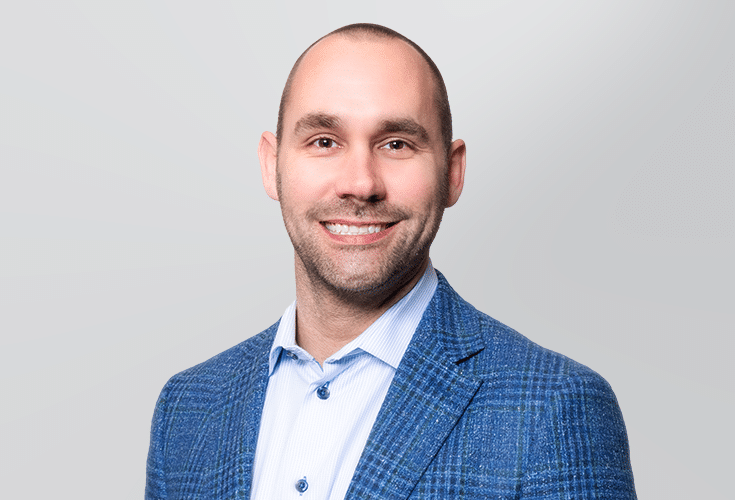 John Barefoot PECivil Engineering Consultant
John Barefoot PECivil Engineering Consultant -
John Barefoot PECivil Engineering Consultant
John is a professional engineer with more than 10 years of experience in planning, design, and construction. His background is in utility-scale energy projects, as well as retail, warehouse storage, industrial, and commercial land development. John’s project experience includes preliminary site planning, site feasibility, entitlement support, grading and drainage design, and construction support services for a multitude of national private energy clients, including solar developers, EPCs, and regulated utilities. His design and solar experience spans across the southeastern United States and he serves as a Regional Lead for the Southeast Solar Team out of Raleigh, North Carolina.
-
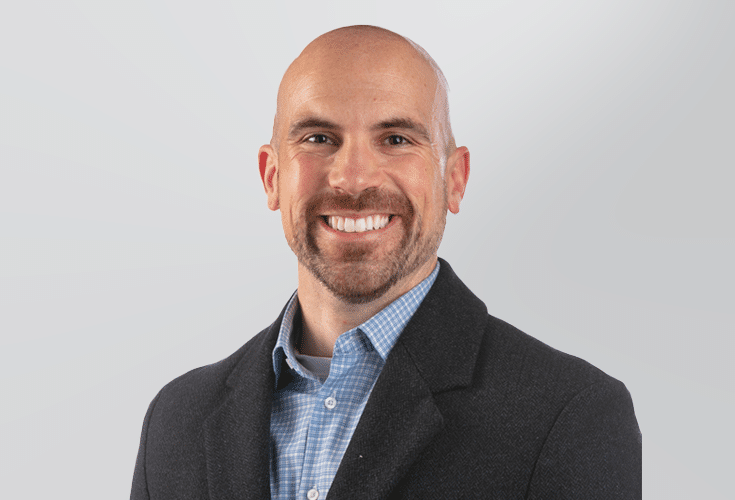 Jason Cooper PECivil Engineering Consultant
Jason Cooper PECivil Engineering Consultant -
Jason Cooper PECivil Engineering Consultant
Jason has more than 12 years of civil engineering experience specializing in site development, detailed drainage design, utility design, erosion control design, water quality design, and permitting for renewable energy and commercial developments. His primary focus in recent years has been on renewable energy projects in the Midwest, but he has also managed various solar projects across the United States. He has worked on over 100 solar projects ranging in size from 1 MW to 500 MW. Through entitlement, design, and permitting processes, Jason has developed quality working relationships with a large variety of permitting agency staff in the Midwest and throughout the Country. He serves as the Regional Lead for the Midwest Solar Team.
